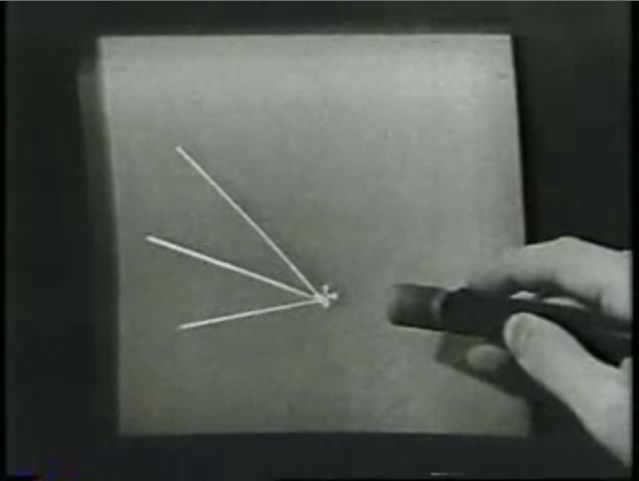Shot in 1962, this video of Ivan Sutherland's Sketchpad is almost 50 years old. It shows Sutherland (just 25 year old) demoing his PhD project, a project that wins him the Turner prize (the Nobel prize of computer science). The program is running on the TX-2 - the last computer in America 'to have its own roof' (see the TX2 instruction manuals). There are a number of remarkable things about sketchpad:
- It is the first use of a Graphical User Interface and the first CAD program. Prior to Sketchpad computers were just switches, lights and punch cards.
- It is the first use of Object Oriented code. This is a coding paradigm which forms the basis of many modern programming languages.
- It is an early example of a program not running as a batch. In batch mode there is no interaction, you put in the inputs and it would give you the outputs, in 1962, being able to interact in real time with the computer is quite remarkable.
For me the most amazing part is the way Sutherland constrains the lines. I thought seeing this done recently in Digital Project (2009, $30,0000 per licence) was cool, but to see Sutherland select a series of lines on different angles and morph them until they are orthogonal is pretty mind blowing. Using todays computer it would still be non-trivial to get the lines to morph into the right place, much less do it in real time on a computer that requires its own room. This feature makes Sketchpad not only the first CAD program, but also the first parametric CAD program. I also think the way objects can be referenced into the drawing is cleaver, and even Digital Project struggles to make instances of object like Sketchpad does.
